 Leading Blog | Posts by Category |
 Leading Blog | Posts by Category |
02.10.23

The Ecosystem Economy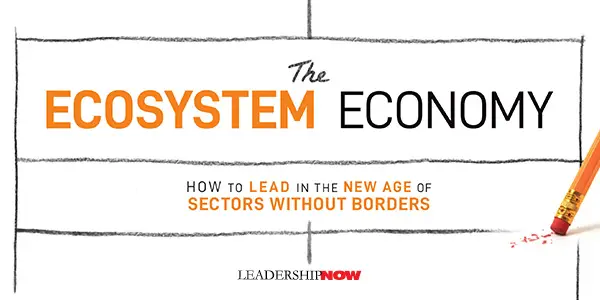
IN THE BEGINNING, as civilizations grew and became more advanced, work was organized around specialized lines of work. These sectors of work, like the mining, textile, or glassmaking industries, thrived with their own supply chains, expertise, and proprietary distribution. And this is basically how we think of business today. But that is changing. McKinsey partners Venkat Atluri and Miklós Dietz illuminate that change in The Ecosystem Economy. The borders between sectors are dissolving. Sectors like construction, real estate, automotive manufacturing, financial services, and health care have been thought of as distinct categories, each operating in its own spheres. Today we see businesses organizing “into new, more dynamic configurations, centered not on the way things have always been done, but on people’s needs.” Businesses form ecosystems by collaborating with one another—by sharing assets, information, and resources—and ultimately creating value beyond what would have been possible for each of them to achieve individually. The term business ecosystem has been used in the past generally to refer to relationships between one organization and its clients. The ecosystem economy that the authors refer to here goes much deeper than that. More like alliances between organizations that pull together the steps in a customer’s journey. Even if each step in that journey is fulfilled or managed by a different company, the ecosystem integrates them into a single platform, so that from the customer’s perspective, it’s all one experience, one journey. In other words, if an ecosystem can help consumers through the most arduous step on their journey, they will be more likely to trust the broader ecosystem with the rest of their needs. Tencent, Apple, and Google are all examples of economic ecosystems. Ecosystems are reshaping the world around us. The question is, how do we adapt and participate in this ecosystem economy? The two questions we need to be asking first are: Where will you compete now? And what should you do to evolve your value proposition? To answer these questions, the authors say, “you will need to vastly expand your scope—and shift the nature of your planning. You need to fundamentally rethink how you define your customers’ needs, your customer base, your industry, your proposition, and the competitive landscape.” The book provides examples of how to begin to work through this. As you do this, other questions begin to take shape, like, will you build the new ecosystem yourself? Will you participate in someone else’s ecosystem? Or a little of both? Then you need to transform your organization from within. You will need to rethink your approach to your organizing and operating model, talent, performance management, the underlying culture, and supporting infrastructure. They boil the lessons of their ecosystem playbook processes and recommendations down to ten principles which I’ll just list here:

Posted by Michael McKinney at 07:39 AM
01.16.23

Key Traits of Challenger Brands that Allow Them to Punch Above Their Weight
CHALLENGER BRANDS know what it means to fight their way to success. As true underdogs, it’s the only option they have. Challenger brands can’t spend their way to success with big ad campaigns like the category leaders. Instead, they start with a strong business strategy and an acute understanding of who they are as a brand. Then, they identify opportunities to leverage that identity for disruption. When challenger brands take consumers and competitors by surprise, that collision carries twice the impact because it’s unexpected. That punch is what gives brands what they most want from their branding, marketing, and advertising — a response. That alchemy begins with anchoring the brand in a genuine consumer insight that distinguishes the brand from everything else. An Underdog Nightmare for the Category Leaders True challengers don’t follow convention. Underdogs don’t succeed by trying to do what the category leaders do, but better. Instead, they find and expose the weakness of category norms and fill those gaps with an extraordinary solution. Years ago, we engaged with a CEO in the mattress industry who wanted to know how he could create real brand distinction and drive more retail traffic in such a highly commoditized category. His mattress chain was struggling with traffic, and with the Great Recession right around the corner, sales had gone from slow to sluggish. He needed an idea to turn up the volume, and he needed it quickly. In an industry where mattresses are always on sale, we knew the brand had to do something to disrupt the market. It needed to be rooted in a point of difference that customers would find important and engaging, especially given the context of a faltering economy and stingy spending on discretionary products like mattresses. The answer to our new client’s dilemma lay hidden in his company’s extraordinary commitment to sales process and training. The mattress CEO was relentless about doing right by customers, and this made him very particular about who he hired and how they were trained. The company’s extensive sales training far exceeded that of competitors. As a result, he delivered a superior customer experience as evidenced by the inconsequential number of returns — especially compared to the category leader, which was well known for its hard-closing conquest approach to sales. That set us up beautifully to offer the mattress industry’s first (and to date, only) One Year Love Your Mattress Guarantee. While the rest of the industry was offering 30-day return policies, our client gave customers an entire year to love their mattress, and if they didn’t, they could bring it back. It was a revolutionary challenger move that turned category convention on its ear. The first month, sales spiked 30 percent, followed by months on end of year-over-year double-digit increases that climbed as high as 50 percent. Our favorite part of this challenger success story was an attempt by category killer Mattress Firm to match our client’s one-year offer only to yank it back quickly after being swamped with returns. 4 Key Traits of Every Underdog As nice as it would be, challenger brand success doesn’t come with the flip of a switch. It takes a solid foundation based on four core traits every challenger brand has to have. If you’re a challenger brand ready to fight and compete, here are the four key traits you need to address first: 1. A challenger strategy. Challenger brands require a marketing strategy that challenges category convention and doesn’t simply mimic the moves of the leader or other successful category competitors. Leadership teams for authentic challenger brands evaluate the competitive landscape with an eye toward changing something fundamental about the way they approach the business. In doing so, they create a new and distinctive competitive advantage — a clear path for a unique marketing strategy that can only be leveraged by their brand. 2. Challenger promises. Challenger brands must also make brand promises that aren’t easily duplicated by competitors. The promise must be solidly grounded in real differences created by the company’s state of mind — something it does best or is earnestly striving to do best. Critically, this promise must be authentic. It can’t simply be manufactured through advertising. 3. Challenger statements. Challenger brands must be willing to make clear and compelling statements about what they are and what they’re not; who they are for and who they’re not for. Famous challenger brands such as Red Bull, Southwest Airlines, and Motel 6 are very specific about what they have to offer and who their products or services are for. They’re also not afraid to position themselves clearly away from customer groups that aren’t in their crosshairs. Challenger brands aren’t afraid to limit their appeal at the expense of alienating those who will merely tolerate them. They are laser focused on those who will love them — their fervently loyal core customer base. 4. A challenger voice. Challenger brands are willing to amplify their strategies, brand promises, and statements through a unique voice. Their advertising and marketing communications look and sound different from their competitors. They say different things, make different promises, and command a different kind of attention in the marketplace. The state of readiness extant in challenger brand leadership not only paves the way for unique and unconventional marketing and advertising, it compels customers to seek them out. Challenger brands can’t afford to cheat the fundamentals. But when they build a strong foundation on challenger strategy, promises, statements, and voice, they will discover insights and be able to leverage the truth. Then they must fight like Hell without relenting. That’s how underdogs win.  
Posted by Michael McKinney at 09:15 AM
06.27.22

Emotion By Design: Creative Leadership Lessons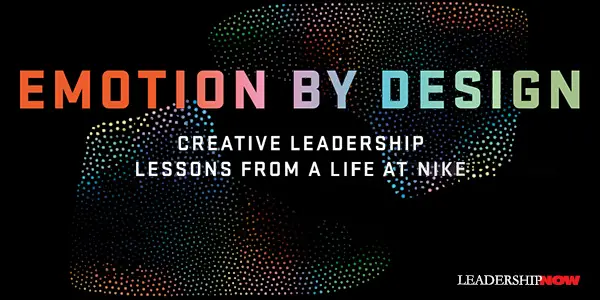
EMOTION moves people and creates attachment. A brand that constructs powerful emotional bonds with its consumers generates a reaction that gives it a unique competitive advantage. It is emotion by design. In Emotion by Design, former Nike global brand leader Greg Hoffman says that “art and marketing can fulfill the same ends, and should often try to fulfill the same ends.” Guiding that idea is the understanding that “art only moves people when they feel inspired or heard or driven to excellence.” As brand marketers, our job is to show the world to our audience in novel, insightful, and at times provocative ways. We do this with our ability to see the insights and the truths that others miss, and reveal those insights and truths to our audience through the means of images, films, campaigns, architecture, and products. Whatever the medium, we share our brand’s values and purpose through insightful stories that move our audience, that elicit a specific emotion, and that build lasting bonds between consumer and brand. It all begins with empathy. “Our ability to understand and share the feelings of someone else is what allows us to get to the deeper truths and begin fashioning a story around them.” And, of course, curiosity. “Curiosity is the catalyst for creativity. It’s what allows you to see opportunities and harness the inspiration to seize them.” It’s about getting outside yourself. Reaching people in new and different ways requires some risk. Many leaders are uncomfortable with the creative risk-taking and rein it in before it even gets started. But to create that emotional bond with your consumers, you need to cultivate a culture of risk-taking. While this doesn’t mean throwing all caution to the wind, it does mean that you incentivize it. “Does an organization actively reward bold ideas? Does the leadership team make time to listen to those ideas? If an unconventional idea doesn’t work, are the creators encouraged to try again?” For Hoffman, that means not playing safe but playing to win. To lead from the front and let your competition react. He notes that “Innovation breakthroughs are rarely created with caution.” And importantly, “We do not take risks because we want to try something new. We take risks because we want to create new modes of thought, of communication, of engagement. We take risks because the world never stops turning and the consumer’s expectations never stop expanding.” What do consumers see when they see you? It is an ongoing story. “The best stories have one thing in common: They touch on the human imagination and elicit an emotional response.” In example after example, he gives a behind-the-scenes look at how the team at Nike did just that—communicated their story in a way that connected with different people in different contexts. Their “Find Your Greatness” campaign redefined what it meant to be great for each one of us, and it expanded their relatability. Hoffman advises that we should not chase cool. “There are cool trends, but no one’s created an icon by following a trend. You create an icon by starting a trend. If you chase one, then you’re probably trying to be something you’re not—and consumers are experts on exposing inauthenticity.” Be who you are, and get cool to chase you. One way to do this is to “play in the intersections.” Be curious. “Don’t stay in your lane. Merge into other currents that share your brand values. By crossing paths with the worlds of art, music, and beyond, you can invite new consumers into your brand and, in turn, have a greater impact on culture.” If you’re looking for inspiration and greater impact, Emotion by Design will get you looking in the right direction and help you to spark your own revolution. 
Posted by Michael McKinney at 01:54 PM
04.26.22

Reach: How to Grow Your Influence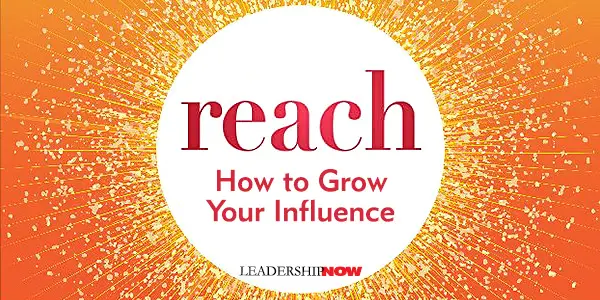
DIGITAL marketer Becky Robinson brings her years of experience together in Reach: Create the Biggest Possible Audience for Your Message, Book, or Cause. The key foundational principle is that reach—your ability to not only expand your audience but make a meaningful and enduring difference—is never static, and it is the product of your work and its impact over time. All leaders need to think about reach in the way that Robinson describes it. We have ideas that we want to share that we hope will gain traction with our audience. We tend to think of reach in terms of followers. If I have a lot of followers, I have a lot of reach. But there is more to it than that. Do your followers open your emails? Do your followers engage with and act on your content?
Value: Focus on creating value. Knowing your audience will help you to focus your efforts on creating content that will provide value to them—practical content that will resonate with them. Share your experiences with your niche market. Longevity: Take a long-term view of your work. “To create lasting impact, you need to have a lasting presence. The longer you last, the greater the impact you will have.” Don’t give up too soon. Consistency: Consistency is not easy to achieve. You need to implement a sustainable approach that works for you. A consistent approach rewards people’s expectations of you. “When you are consistent about creating and adding value, you amass a body of work through your online presence that is credible, valuable, and useful to your online audiences. You become a treasured resource.” Generosity: “Making meaning and making a difference is impossible without a desire to give to others.” Giving away content does not undermine your business success. It actually helps to build it as it creates trust. Generosity also means supporting the work of others online, whether or not they reciprocate the favor. Value, consistency, longevity, and generosity are all important as you seek to achieve reach. Without value, you have nothing to offer and no reason for people to pay attention to you. Generosity is the vehicle for delivering value. The more value you give away, the more you draw people’s interest and attention. Without consistency, it’s difficult to get traction. You may get attention when you launch but fail to create momentum that will help you get beyond your own networks. Without longevity, you may create impact for a moment then fade into obscurity. Robinson delves into the nuts and bolts of expanding reach, from creating websites, repurposing content, writing a book, launching a campaign, to building email lists. Woven throughout all of that are the four commitments using relatable examples of others who have successfully built their reach. While you may be familiar how these four commitments that Robinson presents in Reach apply offline as well, she has adroitly applied them to an online world where you can take advantage of them to create influence like never before. 
Posted by Michael McKinney at 03:19 PM
07.26.21

Become a Brand Renegade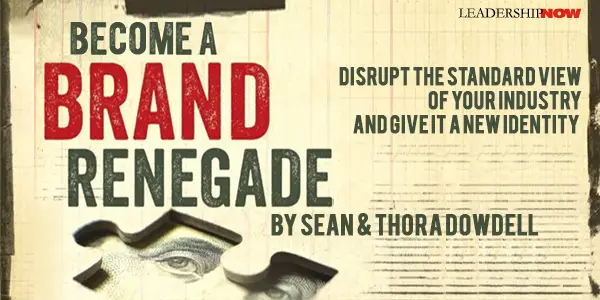
OVER THE PAST FEW DECADES, we’ve seen several examples of “brand renegades.” These are the industry disruptors who have changed how business is conducted in distinctly powerful ways. Think how Uber transformed the transportation industry, how Airbnb took over the lodging industry — not to mention how Tesla is upending both the automobile and energy industries. A brand renegade makes huge changes that everyone else turns their heads to notice. The successful brand renegade has staying power and causes others to ask, “What are they doing, and how can we do it, too?” Our business, Club Tattoo, has disrupted the tattoo and piercing industry. As we built our business, we realized that we had a unique opportunity to reset common perceptions of the industry and take our brand to a national level. To do that, we had to lean into a “brand renegade” mindset and apply it to our daily operations. With each decision, we asked ourselves what’s the best way to do something and could we make it even better. “How it’s always been done” was never our standard. Today, Club Tattoo is a multimillion-dollar business empire with its Club Tattoo luxury studios. Our success lies in our willingness to take bold action, to take calculated risks, and to conduct business in a completely different way. We didn’t care that “it’s never been done before.” Instead, we focused on our brand and how to flip the script on growing a business. We prioritized how to move the industry forward as a more mainstream, P&L-focused business. We updated health and safety procedures, employed technology to streamline billing and appointment scheduling, digitized our designs, added retail elements, and provided respectable wages for our artists and employees to let them know their importance to the business. Some of these considerations are fairly commonplace in other industries, but they didn’t exist within our industry and were massively disruptive. Here are some additional ways that we elevated our brand above the fray. Use them to generate value within your brand. 1. Invest in first impressions. We designed our studios to look like high-end retail stores, such as Louis Vuitton and Dolce & Gabbana. As soon as prospective customers walked into one of our studios, they gained a sense of confidence in our brand. Clients felt reassured by the high-quality look and feel of the establishments. No one in our industry before us had designed tattoo and piercing studios to look like high-end jewelry stores or art galleries. It was truly a game-changer. 2. Invest in the customer experience. We wanted to create the ultimate client experience, from the moment the client walked into our studio and saw how beautiful and comfortable it was to the point when the client looked in the mirror at his or her finished tattoo or piercing. We were creating a differentiating experience for each client. We knew that if someone getting a tattoo or piercing from Club Tattoo had an impression of our brand that held value beyond the actual tattoo or piercing itself, then we could create lifelong brand supporters. 3. Invest in hiring the right people. Our end goal was to hire not only the artist and body piercer with the most talent but someone who understood and could adapt to our company culture. This may seem like an easy requirement for today’s workplace, but in the tattoo and piercing industry, it was a relatively unknown concept. The idea of curated customer experiences was something that had to be taught, and we chose candidates who wanted to learn and improve their careers. 4. Invest in strategic partnerships. As Club Tattoo became established, other well-known brands approached us to collaborate on products in which we could add the “cool factor.” For example, Bicycle, the world’s leading manufacturer of playing cards, produced Club Tattoo decks of cards with tattoo designs that were picked up by Walmart, Target, Walgreens, and other large retailers. Similarly, Oster partnered with us to use tattoo art on its hair clipper line, and it quickly sold more than 40,000 at a hair show in Las Vegas. These and other partnerships added value to both parties’ brands and gave Club Tattoo global exposure. 5. Create a mission statement that goes beyond the basics. Instead of “here’s who we are and what we do,” our mission statement speaks to the brand identity we’re cultivating. We’ve used it as a value touchpoint for our customers, staff, and strategic partners. It shares the ways in which we stand above the rest: Club Tattoo has redefined the luxury tattoo and piercing industry by creating a viable lifestyle that reaches a wide audience but maintains a core value system that is innovative and has set a new standard for the tattoo and piercing industry.  
Posted by Michael McKinney at 04:23 AM
05.18.21

Badvertising: Lessons from the Creative World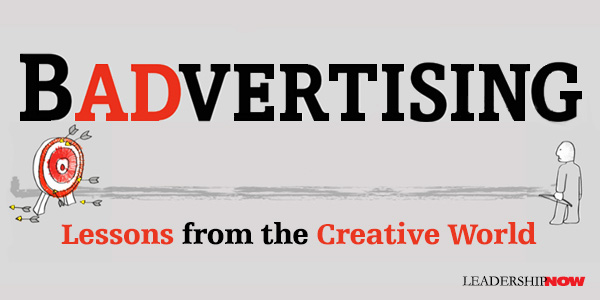
DIRECTED at the folks in advertising, Badvertising: An Exposé of Insipid, Insufferable, Ineffective Advertising contains lessons for all of us. Credited with some of the best advertising copy ever produced, Jim Morris has taken his experience in advertising and exposed in a series of essays the Agents of Stupidity that derail the process of creating, targeting, and evaluating advertising. These same Agents of Stupidity hold leaders in all contexts back in a time when the clear thinking that leads to creativity and innovation is much needed. Some of the lessons include: The sad reality, however, is that pandering to clients’ wants rather than identifying and meeting clients’ needs is one of the most pervasive Agents of Stupidity in our industry. 
Posted by Michael McKinney at 02:15 PM
09.08.20

Stop Making Sense
LEADERSHIP is about moving people. And to do that, you need to be able to inspire. And that means arousing their emotions. Marketing strategist Michael Fanuele says to inspire and fuel passion, you will have to Stop Making Sense. “The more we try to persuade—to explain, to convince, to argue—the less likely we are to arouse anybody to do anything.” The Inspiration Equation: Passion – Reason = Inspiration Passion makes you want to sign-up. Reason wants you think about it more. Adding one decreases the other. But there is a place for reason. By all means, use your reason and logic and the full force of your big brain in figuring out what’s right and wrong, what you want to do and what you don’t, in composing your strategy. But then, when it comes to moving people to inspiring, I’m sorry, but Passion and Reason are indeed enemies. You’ll have to find the right balance between adding one and subtracting the other. How can you subtract just enough reasonableness to rile up your audience, without sounding completely insane? The Inspiration Playbook shows you how. It is comprised of six skills of inspiration that will help you execute on the Inspiration Equation. The first two skills are about your goal—what you are trying to do. 1. Get Delusional If we are going to inspire, we are going to have to get uncomfortable and make others uncomfortable too. “Fear, remember, lives closer to success than reason does.” Make your goal big. And use words ending in -est when you talk about it—best, biggest, fastest. A clear idea is an idea that isn’t trying hard enough. It’s graspable. But a sublime idea—a delusional idea that makes you a little nervous because you can’t quite totally see how it will come to be—well, those are the ideas that inspire. 2. Aim For Action Use direction-giving language, so your audience knows exactly what is expected of them. Give them something specific to do in the moment—a plan. And when you want people to do something more, you have to give them a rule to live by—something they can use to filter their decisions. Sometimes—oftentimes—we don’t want to “move” an audience in the moment; we want to shift their very existence. Three and four are about the how. 3. Show Up To Stir Up In a world of sameness, disorienting your audience makes all the difference. When pitching or selling an idea, we often stick to the comfortable and the mainstream. In observing advertising agencies pitching to clients, Fanuele noticed that “their genuine, compelling differences didn’t really matter when they each showed up in a way that felt exactly the same. What they were saying was irrelevant because of how they were saying it.” And when they do, “they sacrifice their most valuable possession: their own narrative.” When we break conventions and become a force for originality, we inspire our audience to break conventions and become a force of originality. 4. Talk Like Music Music moves people because it works on our emotions. If we work on our messages until they arouse our emotions, they become unforgettable earworms. Make it lyrical. Lyrics work “differently than mere speech does. Their intent is not simply to communicate information, but to evoke emotion.” How would your favorite musician retell the story of what you want to achieve? The final two skills are about who you need to become if you are going to be someone’s Muse. They are the most critical and the most difficult. They are about “summoning the empathy and authenticity you’ll need to move anybody to do anything.” 5. Love, For Real Empathy matters. You can’t inspire an audience you don’t genuinely love. Nobody will move for you unless they’re sure you are on their side, looking out for their best interest. So, if you want to inspire, figure out what you love about the people you’re inspiring. This is an act that will require a great deal of effort and imagination, because “what you love” can’t be generic. For example: “Don’t just love their strength, love the way they start Mondays and end Fridays—and never flag in between.” “Love needs details.” 6. Be True To You When people can see our human side, they can connect with us and trust us. We make the mistake of believing that we need to be better than the people we are trying to inspire. Not so, says Fanuele. “Superiority doesn’t inspire. In fact, it often repels. It’s our flaws and imperfections that make us ‘warm and likable.’” I can’t begin to capture here all of the value that Stop Making Sense provides. It will help you approach your job as a leader in a more effective way. “You’ll have to stop making so much sense. You’ll have to be slightly delusional and very vulnerable.” 
Posted by Michael McKinney at 08:30 AM
08.28.20

Digital Church is Here to Stay: From Social Media to Social Ministry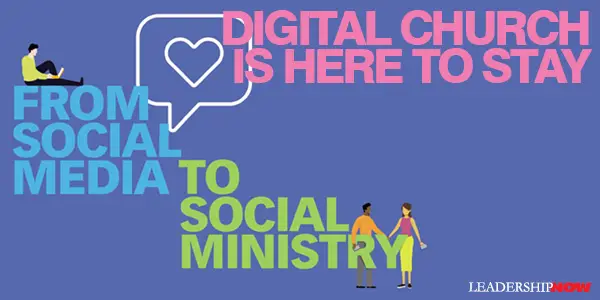
THE RESPONSE to Covid-19 has had a profound effect on what it means to be a church. It has raised a lot of questions. Is a church still a church if it is an online church? Sure, people have been watching online for years, but what about a face-to-face community? Does online attendance lead to engagement? In From Social Media to Social Ministry: A Guide to Digital Discipleship, church leader Nona Jones, answers, “church is more than the worship service.” Jones walks us through the changes and explains why and how to build an effective, truly social media presence. And along the way, we pick up some good leadership lessons, too. Here are some notes from the book: ☙ We live in a post-Christian society. Indicators of a post-Christian society include dramatically decreased percentages of people who pray, study the Bible, claim a religious affiliation, and attend church. Why? According to many of the millennials surveyed, the answer is lack of relevance, or they are saying it doesn’t relate to their priorities and isn’t integrated into their everyday lives. ☙ Dressing down the church service hasn’t solved the problem because the solution didn’t fit the cause. ☙ A social media plan focuses on getting people to the building for a couple of hours every weekend, whereas a social ministry strategy focuses on how to help them grow in their faith through social technology after they leave. ☙ What if effectiveness were also measured by how far the church community reached out instead of only by how much the auditorium fills up? ☙ A social media strategy focuses on building relationships and facilitating connections between and among people so that discipleship can happen. Relationships are the foundation for discipleship. And we don’t build relationships on the weekends during the ninety-minute services we watch together, even if we are together in a building. ☙ Conversation is fundamental to discipleship because discipleship doesn’t happen by tossing biblical content at people. Discipleship is the product of dialogue about how to apply that content to people’s lives in a way that leads to continual transformation. ☙ The Great Commission is about helping people learn God’s truth so they can apply it to their lives. ☙ How videos are titled and categorized is highly important because people use YouTube to learn how to do things or why things are done a certain way, so titling your sermon on forgiveness “December 31, 2019 Worship Service” isn’t going to pop up if someone searches “How do I forgive someone who hurt me?” Instead, title it as an answer to a question to get the best results. ☙ My primary rule of social ministry is this: if you’re to busy to engage, you’re too busy to post. ☙ Go where the people are, and integrate ministry into their routine. ☙ Instead of shaping an online church to fit offline constraints, you have the freedom to shape your online church around its only constraint: your vision. ☙ Facebook is the only truly social media platform. This is why Facebook will form the basis for our social media shift. Build a Facebook campus. ☙ Identify someone already on your team or within your congregation who has the heart of a pastor and a desire to extend the impact of your church beyond the physical boundaries of your community. 
Posted by Michael McKinney at 01:28 AM
09.02.19

Artificial Persuasion: The Invisible Brand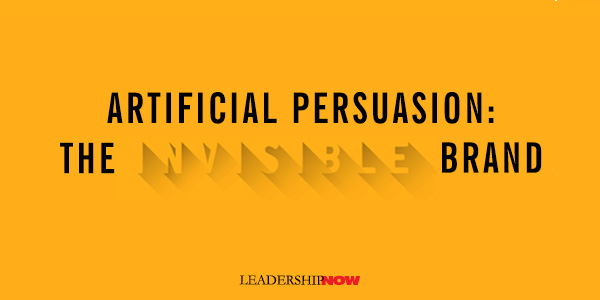
MASS MEDIA has been replaced by mass personalization through the rise of Artificial Intelligence. William Ammerman states in The Invisible Brand, “AI will play an increasingly important role in our lives in the years ahead as marketers turn vast amounts of computing power to the problem of influence people’s decisions.” Buried deep within the media we consume and the apps we use, unseen forces are working behind the scenes collecting data about us to pair with AI and digital advertising to influence everything we do. As a business, the challenge is how to best use this technology to promote ideas and products. As a consumer, the challenge is to understand how this technology is influencing us. Most of the time, it serves us well enhancing our lives and improving efficiency, and we welcome it. There are times when it feels like Big Brother is watching us. A better understanding of what is actually behind the technology will help us to ask better questions and respond in a measured and responsible manner. In a highly accessible way, Ammerman goes into great detail to explain how this technology is emerging and permanently altering the human-computer relationship. He identifies this emerging field as psychological technology, or simply psychotechnology. His focus is on marketing, but psychotechnology is working invisibly to reshape our behaviors in other areas of our lives. (Indeed, broadly speaking, everything we do is marketing.) Psychotechnology combines four areas of innovation: Personalization: Personalization is the norm in digital advertising. Machine learning connects all that data and allows marketers to tailor their messages just for you with your personality in mind. Persuasion: Marketers can use our innate human characteristics to influence our behaviors and thinking. Persuasion is not a new science, but today, it can be executed in new ways. “The science of persuasion is uncovering these unconscious reflexes that trigger specific behaviors.” Ammerman provides a fascinating look at how the science of persuasion is deployed behind the scenes in ways that influence our emotions and brain chemistry. Able to Learn: The amount and kind of information that is and can be gathered about our lives is astonishing. We don’t even think about it. Combined with AI, all this data gathering can be exploited through the power of machine learning. “Algorithms can learn by being fed data about what works and doesn’t work, and they can adapt in real-time to changing information.” 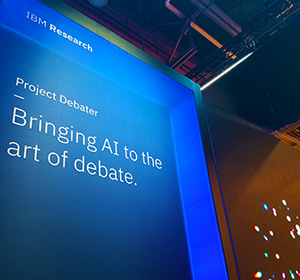 We can now have conversations with machines based on data about what we like, where we go, and who we know that is not unlike the conversations we would have with friends. Increasingly, people are creating emotional bonds with AI-powered machines. Our personal AI-powered tutor could help us to be continual lifelong learners—“a resource to help us learn the skills we need for our jobs, or even help us to identify the various flora and fauna we might spy on a mountain hike.” Ammerman raises questions regarding who owns our data, what is the government’s responsibility, should there be limits, and it’s use in political propaganda. For better or worse, the invisible brand is with us, and we have come to depend on it. “Behind all of this psychotechnology is an army of interests: corporations, governments, unions, politicians, religions, scientists, and universities, all vying for our hearts and minds. Through psychotechnology these brands operate invisibly, but collectively they are reshaping the market and the role of marketing.” Tim Berners-Lee remarked, “If you put a drop of love into Twitter, it seems to decay, but if you put in a drop of hatred, you feel it actually propagates much more strongly.” Perhaps we are hardwired to develop trust and connections slowly, being ever on the lookout for deceit and deception. A drop of love must be confirmed over and over across a long expanse of time to gain traction. We are slow to trust. Conversely, our instinct for survival has us on edge, always ready to respond aggressively to threats. A drop of hate triggers us more quickly, as we respond with less hesitation. This is an exploit the Invisible Brand can use against us by hacking our hate. To remain competitive, business must understand the forces shaping the marketplace. And consumers must educate themselves to the opportunities and dangers and develop the wisdom to think for themselves. Continue the discussion with these thought starters from William Ammerman: ▪ We’ve gone from delivering the same message to everyone at the same time through mass communications, to technology that can deliver different messages to every individual, on demand, through mass customization. 
Posted by Michael McKinney at 10:00 PM
12.07.18

Iconic: How to Attain the Ultimate Level of DistinctionS Creating distinction is based on four cornerstones: clarity (being precise about who you are), creativity (built on clarity, it’s about discovering a different approach—delivering creatively), communication (creating and delivering a compelling story), and customer-experience focus (create distinctive experiences for your clients). In the years since Create Distinction was published McKain realized there was another place beyond distinction. Becoming iconic. Once you achieve distinction, it’s time to become truly iconic. In Iconic: How Organizations and Leaders Attain, Sustain, and Regain the Highest Level of Distinction, he writes: Iconic organizations and leaders have become such universal symbols of distinction they are not only irresistible to customers in their marketplace, they compel interest and admiration across a wide spectrum. How do you attain iconic status? How do you maintain and enhance that status once you achieve it? And how do you regain that status if it has eroded in the marketplace? The answers to these questions are explained in detail in this book. Briefly, the process is based on the five factors of iconic performance that take an organization or a leader to a level beyond distinction:
Play Offense. “Every moment you are playing defense against the competition wastes a moment you could be innovating to make them irrelevant.” Play to your strengths and create accountability with clear expectations, measurement, feedback, and consequences. Make it special—leave a trail of tangibles.
Get the Promise and Performance Right. People evaluate us on promise and performance. “The challenge is that customers will always evaluate your performance based on the promise from their point-of-view … not yours.” Performance is in the eye of the beholder. “Iconic companies find a way to accelerate their promises while improving their performance to a public that has already become predisposed to expect their excellence.”
Stop Selling. Build a relationship. “Appeal to the aspirations of your customers and prospects. Then invite them to savor the experience that they desire through your product or service.” Think less like a professional and more like a rapper—let it flow!
Go Negative. This may seem a bit counterintuitive. Know your weaknesses. “Iconic companies are obsessed with learning what they did wrong, so they can change the behavior—or process—that created the unpleasant experience in the first place.” Check your culture. It may be holding you back from iconic status. “Don’t be satisfied with satisfied customers. See to have amazed, thrilled, and overjoyed followers.” Go negative doesn't mean a negative attitude. Instead, develop a defensive pessimism. “Defensive pessimism is examining what has gone—or could go—wrong, so you take the necessary steps to prevent it from occurring.”
Reciprocal Respect. Disrespectful behavior should never be tolerated. “What you tolerate you endorse.” How do you display respect to others? McKain recommends six ways: Don’t just hear—listen. Display open body language. Don’t nitpick. Show how you’re following up. Don’t withhold praise. Treat others equally and with sensitivity. Obtaining, maintaining, or regaining iconic status requires brutal honesty. Think like a start-up. Have an innovative mindset and look at everything you do from a fresh customer-centric focus. Again be sure to examine your culture. “Until your culture is right internally—no matter the size of your organization—many of your external efforts won’t help.” Your efforts may just draw attention to what you’re doing wrong in the eyes of your customers. Everyone in the organization needs to be on board with providing an excellent experience. “All components of the company have to be aligned internally before they can expect results externally.” The examples McKain uses throughout really help to drive the lessons home and trigger the thinking necessary to implement them in your situation. By the way, McKain has a great set of five short videos on his Instagram page explaining each of the five factors. Here’s #4 on Going Negative. 
Posted by Michael McKinney at 03:23 PM
03.19.18

Brand-Culture Fusion: Are You Who You Say You Are?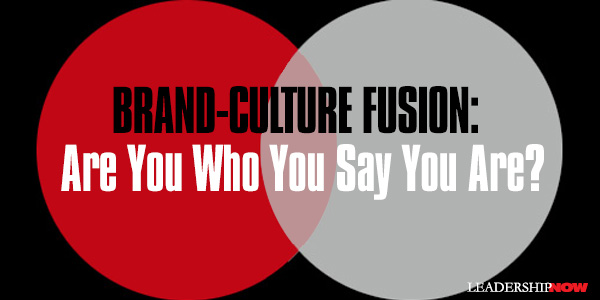
I In Fusion, Denise Lee Yohn makes the case that “you can unleash great power when you fuse together your organization’s two nuclei: your culture—the way the people in your organization behave and the attitudes and belief that inform then (i.e., “the way we do things around here”)—and your brand or brand identity, how your organization is understood by customers and other stakeholders.” She notes that often a company creates a mission statement that states what they want the business to do to create value for their stakeholders and a separate and different brand statement about what they want to be known for. This makes no sense. They should be the same. It simply doesn’t make sense to specify the values through which you engage your employees if those aren’t linked to the way you want your employees to engage customers. Instead, you should bridge the gulf between organizational and brand values by using one set of core values to describe the unique way you do things on the inside and the outside. Your values should function as the “operating instructions” of your organization—that is, they should inform, inspire, and instruct the day-to-day mindset and behaviors of your people. Denise identifies nine brand types: Disruptive, conscious, service, innovative, value, performance, luxury, style, and experience brands. She recommends that you first identify your main brand type that your organization falls into and then identify the kind of culture required to deliver on it. Do the values that currently exist in your organization align with those that correspond to your brand type? Are you who you say you are? Your communications, policies and procedures, compensation, environment, and rituals should reflect the values that exist in your organization. Denise offers a number of ways to do that. It is difficult to transform your culture to define your brand. It’s easier to define your brand by your culture. In some situations, you’re actually better off allowing your culture to lead your brand. If your convictions are so strong that you are more committed to promoting your purpose and values than achieving and particular business or brand goal, then you should prioritize your culture as the driver of your brand identity. Or if you operate in the public sector or yours is an institution such as a science or faith-based organization where a well-defined brand was not needed in the past, you can shape a more authentic brand identity through the inherent values of your people than through an eternal or contrived aspiration. So long as your culture is not fundamentally toxic or dysfunctional, you can use it to shape your brand. Take the FUSION Assessment to determine your “desired culture”—the culture you ought to cultivate to support and advance your brand identity, or the brand identity you’d like to evolve to. You’ll also have an opportunity to assess how far off you are from your desired culture and to pinpoint where you need to make changes in your brand or culture (or both) to fuse them together. 
Posted by Michael McKinney at 11:37 PM
03.24.17

The Caterpillar's Edge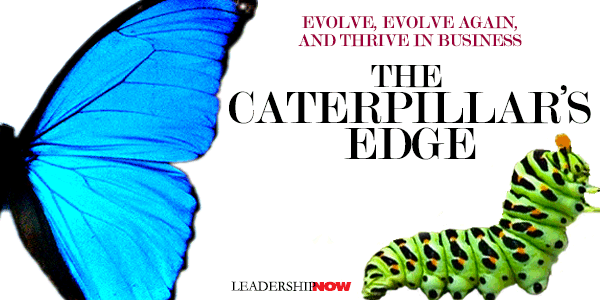
T Sid Mohasseb writes in The Caterpillars Edge that “to realize an improved future you must purposefully leave the past behind, and embrace the uncertainty ahead—constantly and without fear. You must evolve, then evolve again and thrive.” The problem as Mohasseb sees it is that many leaders are stuck in their approach to planning and execution. “They are guided by old habits formed in an era when competition was more static.” The data you are using can’t be captured in a fixed plan or you’ll have an excellent strategy for the year before. Your planning and execution needs to be more dynamic than that. We need a new and more agile approach. “The world will not wait while you contemplate, take time to gather enough data to be exhaustive in your analysis, and then build consensus around actions.” You can improve your “likelihood of winning by constantly reading and applying the incoming data points.” “You must learn and live and compete in an uncertain and always changing reality.” Prefer change to the comfort of stability. There are three crucial rules to be applied here: 1. Align with Uncertainty—Adjust to the dynamic world around you. Be prepared to shift your focus at all times. The market is shifting. By the time you transform, the advantage you wanted may be long gone. 2. Appreciate Reality—Understand what is practical and achievable by you and your company. You can evolve over and over. 3. Aspire for More—Seek more data, more analysis, and more “Aha” moments or move faster to reach the moments of insight, where the solutions to problems become clear. McKinsey reports that eight out of ten times strategists focus on known hypothesis—opportunities that have been examined in the past or are already evident. “Most people use analytics in the context of consumer-level transactions. But there is no lasting strategic advantage. When people claim that they are competitive because they are using analytics, that’s just the flavor of the day. Now unless you tell me that you have used data analytics in order to find a new product ground, a new design, and a new market, you are not strategic . . . as opposed to let’s sell more shoes to the guys who are buying shoes . . . what is being done for the most part today is a kind of a tit for tat, and that’s what I see most people calling gaining competitive advantage.” Optimizing today’s processes for greater efficiency does not necessarily offer an advantage for tomorrow. Use the force and create the future. Don’t use the data to justify your actions, use it to discover advantages. It’s not the analytics, but the execution. Analytics is just and tool and soon will be found and used by everyone everywhere. As that occurs, the “business basics of good strategy and execution will, once again, drive the lasting victories.” A winning strategy must be adaptable from the start. Be prepared to improvise. Selected Caterpillar Edge advice:

Posted by Michael McKinney at 12:34 PM
08.19.13

Collaboration is the Key to Providing Consistent Brand Value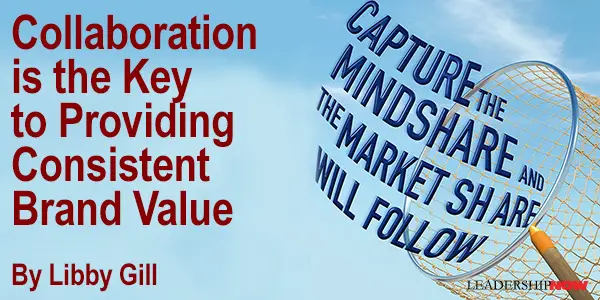
AS much as people love to over-complicate the topic of branding, simply put, a brand is a promise of value. The most successful brands - the ones I call Mindshare Brands - are those that deliver or over-deliver on that value promise consistently over the long haul. Think Coca-Cola. Think Mercedes. Think Apple. Think of any brand that you count on to deliver what you want every single time - or pretty darn close to that. Even the big guys slip occasionally, though mistakes well handled can actually be terrific branding opportunities. So how do you continually commit and re-commit to going the extra mile for your customers? How do you stay focused in the face of crazy busy workloads and constant change? The key to providing consistent value, despite the obstacles you will inevitably encounter, is to build a culture of collaboration where everyone's goal is to delight the customers and ensure their swift return. In today's highly competitive business climate, it's nearly impossible for anyone to succeed by going it alone. So it's well worth the time and effort it takes to create a collaborative atmosphere based on trust, respect, and openness. Here are some strategies you can employ to jumpstart the process:
 
Posted by Michael McKinney at 08:28 PM
07.18.13

Loyalty Beyond Reason Defined
EARLIER this year, star NFL quarterback Joe Flacco re-signed with Super Bowl champions the Baltimore Ravens in a record six-year contract worth $121 million. The deal made him the highest-paid player in the league. And how did he celebrate? Not with champagne, a new car, or an extravagant holiday. He went to McDonald's. Flacco marked this life-changing event with 10 chicken McNuggets, fries, and an unsweetened iced tea for $6.99. Call it instinct, call it a craving, call it whatever you like. Flacco could have gone anywhere and bought anything. His options were unlimited, and he chose McDonald's. That decision generated media coverage across the country as journalists and commentators marveled at why a man with everything would choose to celebrate such a huge occasion in such a normal way. For McDonald's, it was the best kind of brand exposure you can get. At some point in the past, they had won Joe Flacco over and at a high point in his life, picking up some McNuggets was just the natural fit. When it comes to the choices we make as consumers, we know emotion plays a big part in that process. For many people, they can't necessarily explain why they love one brand over another or why they might drive to three different stores to find it. Logic isn't often a factor. At Saatchi & Saatchi, we call it Loyalty Beyond Reason. Researchers in Australia recently had an opportunity to explore the idea of brand devotion, identifying companies such as Nike, Volkswagen, Harley-Davidson, and Louis Vuitton as having generated "cult-like" followings. However, the research ended up with a narrow focus on more extreme examples of consumer behavior that could be more readily classed as fanaticism. And herein lies the difficulty for behavioral analysts. Consumers who are loyal to a brand -- loyal beyond reason even – are not fanatics. They don't obsess over their purchases, they simply see them as an essential part of everyday life, because -- and this is crucial -- they have developed a relationship with a brand that is built on respect and love. It isn't possible for a brand to generate Loyalty Beyond Reason in its consumers if it isn't reliable or respected. It doesn't matter what you are selling -- toilet paper, cookies, cars, or services. Joe Flacco heads to McDonald's to celebrate a $121 million deal because that's where he feels comfortable and knows exactly what he's getting. To be loved, you have to deliver what you say you will. Repeatedly. Then you can take the next step and become the first choice. You can become a Lovemark.  Loveworks follows Brian's books Basics: Online Marketing (2010) and Basics: Marketing Management (2011). He has been published in Advertising Age, the Journal of Advertising Research, and in several peer-reviewed books and journals. In 2011 Brian was presented with the coveted Teaching Excellence Award by the Newhouse School's graduating class. 
Posted by Michael McKinney at 11:04 PM
05.08.13

How to Make Your Ideas Contagious
AS leaders we need to understand how to make our ideas catch on. This is most effectively done through word of mouth and social influence. It's more persuasive than advertising and is more targeted to an interested audience. Jonah Berger shares the science behind word of mouth in Contagious and even teaches a class at The Wharton School by the same name. Interestingly, most people think that most word of mouth happens online. But research finds that only 7 percent of word of mouth happens online. "Offline discussions are more prevalent, and potentially even more impactful, than online ones. Berger presents many examples of contagious ideas that seem clever in hindsight. And we can learn from these. From these examples and his own research, he has assembled six principles or STEPPS for making products, ideas, and behaviors more likely to become popular: Social Currency: We share things that make us look good. Find the inner remarkability that makes people feel like insiders. Give people ways to achieve and provide visible symbols of status that they can show to others. Triggers: How do we remind people to talk about our products and ideas? People talk about what comes to mind. Top of mind leads to tip of tongue. There is immediate and ongoing word of mouth. Movies benefit from immediate word of mouth, but many ideas and initiatives benefit from ongoing word of mouth. What keeps people talking? Triggers. Think context. Think about whether the message will be triggered by the everyday environments of the target audience. "A strong trigger can be much more effective than a catchy slogan." Emotion: When we care, we share. Naturally contagious content usually evokes some sort of emotion. Not all emotions are equal. Awe is good. Sad is not. High-arousal emotions—awe, funny, anger, anxiety—are shared more than low-arousal emotions like contentment and sadness. Public: Built to show, built to grow. Making things more observable makes them easier to imitate; products and ideas that advertise themselves. Practical Value: Products and ideas we can use. Highlight the value and package our knowledge and expertise so that people can easily pass it on. Stories: People don't just share information, they tell stories. Information travels under the guise of what seems like idle chatter. Embed your products and ideas in stories that people want to tell. The more of these principles you use the better, but not all are required to make your idea contagious. 
Posted by Michael McKinney at 11:49 PM
04.15.13

Nice Companies Finish First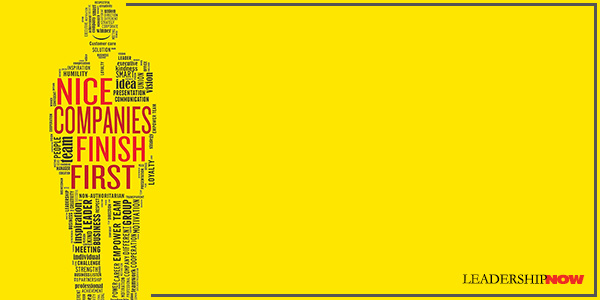
WHEN you have the power usually associated with leadership, it's easy to begin thinking that you can do anything you want. You can treat people any way you want. Sometimes it works in the short term, but it never works in the long term. It's self-centered, and it eventually kills your influence. It's the core message of Nice Companies Finish First by Peter Shankman: "Being a selfish bastard who doesn't believe the rules apply to you simply won't get you very far." Shankman cites a study where 700 people from a variety of industries reported on the treatment they received from their managers: 31% reported that their supervisor gave them the "silent treatment" during the year.
And it goes on. Not surprisingly, this kind of abusive behavior results in a workforce that "experienced more exhaustion, job tension, nervousness, depressed mood, and mistrust." Shankman says your manager might be a jerk if they: are a know-it-all dictator, are uninterested in feedback, take sides unfairly and openly, are wasteful of resources, are a Desert Island boss (non-existent), a builder of empires, are a talker and not a doer, think adversaries work better than teams or are in a constant cycle of crisis. The Nine "Nice" Characteristics Shankman then identifies nine "nice" characteristics that will eradicate "jerk" behavior beginning with "enlightened self-interest" since it underpins all of the others. A leader with enlightened self-interest will think in terms of the transactional benefits of everything they do. To be sure, there are times when a leader must make unpopular decisions, but, says Shankman, "you can make beneficial decisions and lead your company to greatness without resorting to third-grade schoolyard tactics." An enlightened leader is accountable, invests in others, consults with those affected by decisions, seeks counsel, expects the truth, and reacts mindfully and positively to any situation. The other traits he describes are: Accessibility (Inaccessible, aloof CEOs can run successful businesses for a while, but in the long run, they make bad leaders.), Strategic Listening (leadership is "a lot less about convincing people and more about benefiting from complex information and getting the best out of the people you work with. Listening for comprehension helps get you that information, of course, but it's more than that; it's also the greatest sign of respect you can give someone."), Good Stewardship (Good stewardship is about responsible management and ethical standards that are in sync with the concerns of all of the constituents who are important to your business, including shareholders, stakeholders, investors, neighbors, and communities.), Loyalty (360 Loyalty–loyal to what works for the whole company and for all good employees.), Glass-Half Full POV (Seeing the difference between "Everything's OK!" and "Everything will be OK if we do the following things."), Customer Service-Centric ("Makes it easy for people to become and stay customers in every way possible." Serving first selling second.), Merit-Based Competitor (Compete by differentiation. It's OK to be nice to your competition. Kill them with kindness.), and Gives a Damn ("Turning down the easy buck to instead do the right thing is one of the hardest choices we have to make."). You can't fake being nice. "As communication becomes more fluid, leaders will be more exposed. We won't be able to hide anything anymore."

Posted by Michael McKinney at 12:14 AM
02.13.13

Rebooting Work: How to Make Work— Work for You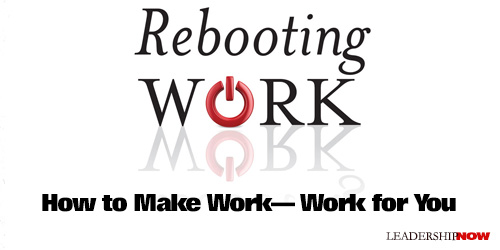
Rebooting Work by Silicon Valley legend Maynard Webb and Carlye Adler is a sensible look at the changing nature of the workplace and how you can use emerging technologies to take charge of your career. To become a CEO of your own destiny. Less than half of Americans (47 percent) are satisfied with their work. Companies are changing too. They can no longer provide the safety nets that were expected in the last century. Employees must become more self-reliant. That of course means a workplace that rewards people for their performance rather than their time in. An organization that supports entitlement over results, writes Webb, “can limit growth and opportunity.” Giving someone a leg-up is one thing, entitlement has a permanence to it that both hinders employees and harms companies and neither performs up to their maximum potential. Webb believes that technology presents us with an opportunity. It has the power to enable people to do something about their dissatisfaction with work and move on to careers that can provide both fulfillment and financial security. “Understanding and embracing today’s technological trends is the fastest way to travel to the career of your dreams.” 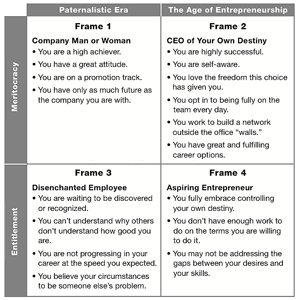 Webb presents us with four ways of looking at work. We may move from frame to frame but we tend to operate in one. They are Company Man or Woman, CEO of Your Own Destiny, Disenchanted Employee, and Aspiring Entrepreneur. Where we should all be headed, states Webb, is to the mindset of the CEO of Your Own Destiny. We are living in the age of the entrepreneur. Webb presents us with four ways of looking at work. We may move from frame to frame but we tend to operate in one. They are Company Man or Woman, CEO of Your Own Destiny, Disenchanted Employee, and Aspiring Entrepreneur. Where we should all be headed, states Webb, is to the mindset of the CEO of Your Own Destiny. We are living in the age of the entrepreneur.
Prior to the Civil War, most Americans worked in agriculture or as small merchants or tradesmen. Success was the result of self-direction, self-motivation, and self determination. In a way, everyone was self-made.Today personal and professional development is on the employee. It “requires you to be relevant every day and to be voted on to the team you want to play with.” But with this freedom come accountability. In an entrepreneurial age it is more important than ever that you think like a leader—no matter where or at what level you work. As research indicates, many people find themselves in the Disenchanted Employee frame: you are waiting to be discovered or recognized, you don’t understand why others don’t see how good you really are, your career isn’t going as expected, and you believe your circumstances are someone else’s fault. This kind of thinking is not just unproductive, it feeds on itself and keeps you just where you don’t want to be. One of the most important things you can do is to get a mentor; someone to help you see the reality of your situation and offer constructive advice to get you moving again. Webb also offers these ideas:
Of Related Interest: 
Posted by Michael McKinney at 01:55 PM
02.10.12

Grow: Taking Your Purpose to the Next Level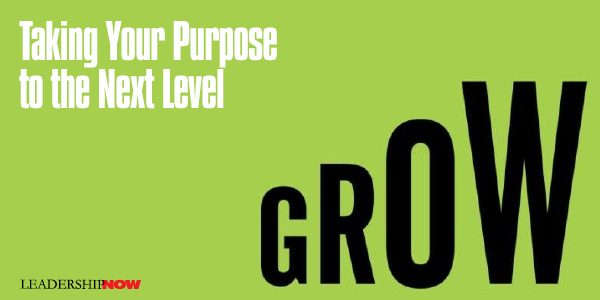
Jim Stengel, former global marketing officer for Procter & Gamble, believes that businesses must rethink their purpose to achieve far better results. But not just the most apparent purpose, but a higher-order ideal or purpose. For example, Johnnie Walker exists to make great whiskey, but its higher-order ideal is to celebrate journeys of progress and success. Starbucks must make great coffee, but it must do more if it is to attract people and innovate in ways that make life better for the people they serve both inside and outside the organization. “It’s necessary,” writes Stengel in Grow, “to want to be the best-performing enterprise around, with the highest standards, the best people, and the most satisfied customers. However, this simply doesn’t aim high enough and look far enough ahead. To hit higher targets and stay out in front of the competition requires an ideal.”To that end, Starbucks also exists to create connections for self-discovery and inspiration. It’s what fuels passion and creates meaningful work. “A brand ideal of improving people’s lives is the only sustainable way to recruit, unite, and inspire all the people a business touches, from employees to customers.” Stengel believes that a higher-order brand ideal must improve people’s lives in one of five fields of fundamental human values: Eliciting Joy: Activating experiences of happiness, wonder, and limitless possibility; create moments of happiness that engage our thoughts and emotions as well as our physical senses. (Coca-Cola, Zappos, Lindt) Enabling Connection: Enhancing the ability of people to connect with one another and the world in meaningful ways. Key concepts in this field are: connect, listen, reach, and community. (Airtel, Fed Ex, Blackberry, Natura) Inspiring Exploration: Helping people explore new horizons and new experiences. Helps customers learn, gives them powerful tools, and invites them to reinvent themselves and their world. (Apple, Discovery Communications, Pampers, Red Bull) Evoking Pride: Giving people increased confidence, strength, security, and vitality; supporting self-expression and inspiring passion. (Calvin Klein, Heineken, L’Occitane) Impacting Society: Affecting society broadly, including by challenging the status quo and redefining categories. (Accenture, IBM, Method, Seventh Generation) Stengel’s bases his conclusions on a ten-year growth study involving 50,000 brands. The study tracked the connection between financial performance and customer engagement, loyalty, and advocacy. The result was “The Stengel 50.” In the 2000s, an investment in these companies would have been 400 percent more profitable than an investment in the S&P 500. “If you’re willing to embrace the same concept and align your business with a fundamental human ideal, you can achieve extraordinary growth in your own business and your own career. My research shows that your growth rate can triple.” As a side note, whether or not the study suffers from the Halo Effect is beside the point. Stengel’s point is good psychology. Success is more complex than any one factor. More good decisions than bad (intelligent people make dumb mistakes too), timing, and luck all play a part too. And then great companies get off track, not because they were doing the wrong thing, but because they stop doing them or failed to adapt appropriately. The ideas presented in Grow are what worked for Stengel for the time he was at Procter & Gamble and properly applied may work for you too. Generally, if it is based on sound principles, it’s always worth consideration. And Sengel’s ideas are. One implication of the study is interesting. Stengel reports that the “study challenged P&G’s paradigm of moving people around frequently. The companies that were growing the fastest had a different paradigm. In recruiting and hiring they looked for people whose values fit with their brands and tended to keep people working in the same areas for much longer.” He categorizes the people that run The Stengel 50 as business artists. “The fastest-growing businesses in the world have a leader whose relationship to the business is not primarily that of an operator, no matter how savvy, but an artist whose primary medium is an ideal.” The business case for ideals is about playing a role in the lives of both customers and employees at a much more important level than the competition does. It’s about connecting with people holistically: rationally and emotionally, left brain and right brain. Stengel recommends that you continually ask four questions: How well do we understand the people who are most important to our future? What do we and our brand stand for? What do we want to stand for? How are we bringing the answers to these questions to life? The power is in the answers and executing against them. What is your primary purpose? What do the people you serve care about beyond what they buy from you? Could you benefit from discovering your higher ideal? Of Related Interest:

Posted by Michael McKinney at 05:00 PM
05.05.11

Bill Roedy: From West Point to MTV
BILL ROEDY, former Chairman and CEO of MTV Networks International, began working for HBO in 1979 when it was broadcasting only nine hours a day. There he learned that distribution was everything. It was to be his mantra at MTV—aggressive, creative, relentless distribution. Roedy shares his experiences and lessons in What Makes Business Rock. From virtually nothing, he built MTV International into the largest media network in the world. For anyone involved doing business internationally, it is essential reading. As manager of HBO’s national accounts, he learned that “In life as well as in business, the ability to sell is the foundation upon which success is built.” Some people don’t understand that he says, but even in Vietnam, although he had the formal authority to force troops to obey my orders, I found that if people didn’t believe in the mission, I never got a total effort from them.” Leaders are always selling. Although reluctant to leave HBO and move to London, in 1989 he became managing director of MTV Europe. What he inherited wasn’t working. He had to quickly create a better product, get more distribution and generate revenue. Getting the right people in place was crucial to creating an entrepreneurial organization. “Never take ‘No’ for an answer.” “Take chances.” “Break all the rules.” Their objective was to be the most visually engaging channel in the history of European television. To make sure viewers always knew they were watching MTV, they put their logo in the corner of the screen and left it there. No one had done that before. (Now everyone does.) Here is a lesson every leader could bear to keep in mind: as a leader, your opinion matters—maybe more than you know. But it can actually be having a negative impact. The MTV playlist is extremely important to its viewers and giving them what they want to hear is essential to MTV’s survival. Roedy says that in the beginning, he attended those meetings if only to be the voice of reason and a subtle reminder that they were running a business. “But after attending half a dozen of these meetings I realized I was making a huge mistake. I was much older than our demographic and my musical tastes were very different. I was skewing the choices older.” So he stopped attending those meetings. “As much as I enjoyed being part of that process, I had to remind myself that I was a manager, and I had to delegate decision-making authority to those people I trusted.” How many leaders, for all kinds of well-intentioned reasons feel they have to leave their fingerprint on everything, while they are in-fact stifling their people and skewing the results? Roedy’s success at MTV can be attributed to the fact that he was always reinventing. “The longer you stay with the same strategy, the more vulnerable you become to your competitors.” His most important contribution was the idea, “Think global, act local.” MTV was already local to Europe, but it had to be broken down to the national level, country by country. “Learn the local culture and reflect it in every decision we make,” was their business strategy. He created a structure similar to what he learned in the military: small operating units in the field fighting the competition. “My belief was that the local people would best reflect the needs, tastes, and desires of the local audience, and because their jobs would depend on the bottom line, they were much less likely to make risky or destructive financial decisions. In Vietnam, I had seen over and over the benefits of dealing directly with the loyal population on their own terms, rather than trying to impose our beliefs on them.” Because of the complexities of operating an international business, you need be there on the ground to really feel it. On MTV Arabia for example, they broadcast the call to prayer on the channel five times every day. For Ramadan, they produced an animated film explaining the meaning of that important religious holiday to young people in a creative way and refrained for a month from showing any music videos. Throughout the book there are stories of music celebrities—singing karaoke with Bono and Bob Geldof dressed as a nurse in Tokyo at 4 a.m.—and others like Sumner Redstone, Robert Maxwell, Jeff Bewkes, Nelson Mandela, Jiang Zemin, Fidel Castro, Tony Blair, and the Dalai Lama. They add color to the book and make it all the more interesting. But read it for the insights into global business. 
Posted by Michael McKinney at 01:28 PM
05.04.11

What Makes Business Rock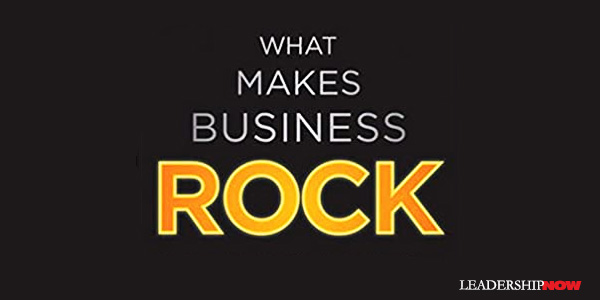
AFTER reading What Makes Business Rock by Bill Roedy, I have developed an appreciation for what it took to build MTV Networks International into what it is today. Former Chairman and CEO, Bill Roedy, has had a remarkable career. Due to financial constraints, he followed his Dad into West Point. Not his first choice. He became a member of the “Century Club” collecting more than a hundred hours of punishment duty. But he did learn the “difference between fighting the system and finessing it.” He also learned many of the skills that would enable him to succeed in business, including “discipline, time management, the value of teamwork, and the importance of physical endurance.” He learned how to prioritize. Survival depended on it. “Too often,” writes Roedy, “I have seen people focusing on the wrong things—things that are not going to directly or immediately affect their business….Leaders need to learn to cut through the chaff to determine priorities and to identify the real target.” After West Point he served in Vietnam in various command positions. “I learned the importance of making quick and firm decisions, communicating those decisions clearly to my troops, and then doing anything and everything necessary to implement them. I learned the importance of building morale, camaraderie, and a team spirit. I learned how to deal with the chain of command and how to get around it when necessary.” From Vietnam he went to Northern Italy where he spent four years in command of three NATO nuclear missile bases. A good place to learn how to deal with pressure and stress. “There are few situations more stressful than commanding a nuclear missile site and trying to determine in 30 seconds whether the aircraft approaching the base was a friend or foe. There was no margin for error. We had to be perfect every day.” Wanting to go into business, he resigned the military after 11 years and went to Harvard to get an MBA. As a child, Bill was so enthralled by the power of television that he would memorize the TV Guide and recite the schedule back to his mother. He knew he wanted to work in television so instead of the typical corporate route followed by his classmates, he took a job at a small start-up cable network called HBO. Roedy’s background doesn’t make him the likely candidate to build MTV International, but it certainly prepared him for it. More on that tomorrow. 
Posted by Michael McKinney at 11:46 PM
12.07.10

Opportunity Screams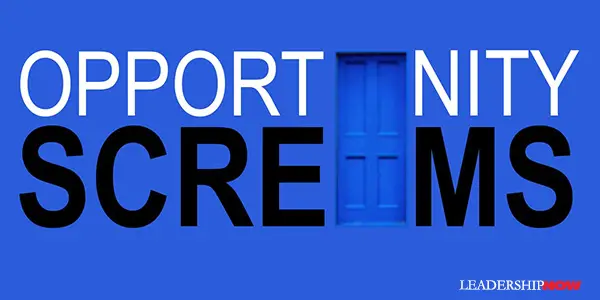 IN Opportunity Screams, Tom Asacker argues that information is no longer power. Power today comes from passion and purpose and the ability to create meaning from information. Through the metaphor of three locked doors—Engagement, Interest and Belief—he develops a framework for unlocking these states of mind in others to attract their attention, sustain their interest, and inspire them to act.
IN Opportunity Screams, Tom Asacker argues that information is no longer power. Power today comes from passion and purpose and the ability to create meaning from information. Through the metaphor of three locked doors—Engagement, Interest and Belief—he develops a framework for unlocking these states of mind in others to attract their attention, sustain their interest, and inspire them to act.
Asacker does not offer a formula to follow. More importantly, he explains the mindset necessary to apply these ideas to your product, service or idea. It really gets back to relationships. He shares a lesson from his father: “It’s all connected. Transparent, honest, caring relationships bring meaning, happiness and growth to your business and to your life.” We are, all of us, at this time, facing a rare opportunity, but to take advantage of it, says Asacker, we must get a thoughtful plan together. “It’s how you frame the situation that will dictate your outcome.” There are no shortcuts. You’ve got to put the time in. It’s not just for marketers, but a must-read for anyone working to influence others. The book also offers links to video extras located on his web site. A brilliant and meaningful idea, even if placed directly in people’s paths, is simply not enough to unlock the Doors to opportunity today. Please don’t delude yourself into thinking that it is. The results will break your heart and your spirit. Passion without understanding eventually burns out. 
Posted by Michael McKinney at 05:32 PM
11.23.10

Shifting From a Supply-Driven Economy to a Demand-Driven Economy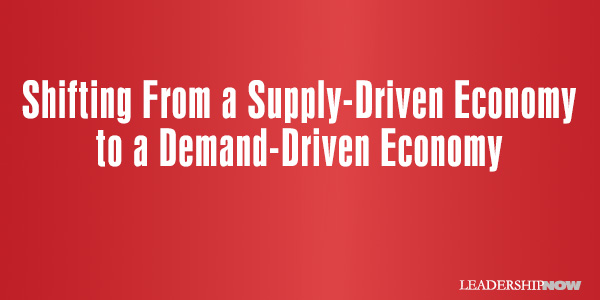 IT was always safe to assume the ever-expanding marketplace would consume everything we produced. But the economic downturn has brought to light, the shift from a supply-driven economy to a demand-driven economy. Authors Rick Kash and David Calhoun point out in How Companies Win that we “have now entered an era of oversupply.” ... Consequently, “organic growth and profitability become increasingly difficult to achieve.” At the same time, “it is imperative that you construct a framework in your company that encompasses and aligns everyone toward meeting not just the current but the latent and emerging demand of your highest-profit customers and consumers.”
IT was always safe to assume the ever-expanding marketplace would consume everything we produced. But the economic downturn has brought to light, the shift from a supply-driven economy to a demand-driven economy. Authors Rick Kash and David Calhoun point out in How Companies Win that we “have now entered an era of oversupply.” ... Consequently, “organic growth and profitability become increasingly difficult to achieve.” At the same time, “it is imperative that you construct a framework in your company that encompasses and aligns everyone toward meeting not just the current but the latent and emerging demand of your highest-profit customers and consumers.”
How Companies Win is a book about learning to understand demand. If you are relying on your customers to tell you what they want it’s too late. You’re playing at best a defensive game because they’ve already told your competitors as well. Getting ahead of the demand “whole it is still forming” is the key. Successful companies are looking at what the demand will be like tomorrow, next year, and five years from now. They get their cues, the authors report, in these ways:
This requires, of course, a new set of skills for leaders to understand the management of demand. Not that supply chain management is no longer needed, it just isn’t the decisive factor it once was, say the authors. To the four P’s of marketing—product, price, place and promotion—they add precision as an important factor in creating the alignment between what you sell and the customers demand. It goes beyond market segments—who is buying—to an analysis of the demand landscape—why customers are buying what they are buying; how they think about their purchasing decision. Society is guiding many innovations and is shaping industries. Businesspeople should keep a focus on demand. 
Posted by Michael McKinney at 04:18 PM
10.29.10

It’s a Jungle in There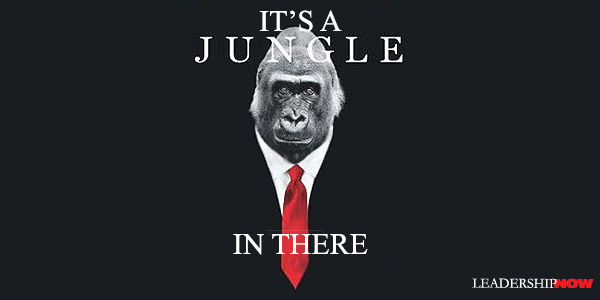
ANYONE that has ever been to the Rainforest Café, knows it's a treat. Created by Steven Schussler, the Rainforest Café holds the record as one of the top-grossing restaurant chains in the world and was the first restaurant concept to be featured at every Disney theme park worldwide. Schussler shares in It’s a Jungle in There, what it takes to make it happen and the lessons he learned that can be applied to your dream. Schussler embodies the five Ps of successful entrepreneurship—Personality, Product, Persistence, People, and Philanthropy—that he teaches in the book. He writes, “As a leadership quality, one’s own passion is what galvanizes others into action.” Passion and persistence has played a big part in everything Schussler has done. It’s “not going through the motions but going through with the emotions.”
“In the bedroom, my bed was constructed to look like it was suspended in a tree….Birds and animals moved freely through the area during showings of the house….Every room, every closet, every hallway of my house was a ‘scene’: an attempt to present my idea of what a rainforest restaurant would look like in actual operation….No venture capitalists were going to invest their money in my far-out concept without actually seeing it, so I transformed my house into my vision of what a rainforest restaurant would look like in order to make them believe in my dream.” Naturally, this would catch the attention of your neighbors (and law enforcement) too. There were problems of all sorts as you can imagine. And Schussler writes, “Being passionate doesn’t totally shield you from moments of doubt.” But his passion finally won out. How far are you willing to go to see your dream realized? In short, high-content chapters, he explains his guiding philosophy and backs them with concrete experiences. He has two quotes framed on the wall over his desk: “When you’re out of quality, you’re out of business” and “The noblest search is the search for excellence.” He talks about looking for “enhancement gaps.” Those gaps between “what you are seeing and what you could create to make what you are seeing better by providing some product or service.” He asks, “Are you willing to help other people succeed even when it’s not a requirement of your job to be of assistance?” Self-control: “What you don’t want to do is say things and/or act in a manner that will create negative impressions and the unwanted consequences that are certain to follow.” You must know your audience. Burning Bridges/Writing People Off: Don’t do it. “What I learned that day reconfirmed my belief that ego can be a killer, especially an unchecked ego. Most entrepreneurs need to have a healthy ego, but you also have to be realistic. That’s a very delicate balance—the kind of balance you need to cross a bridge you tumbled off the first time around.” Anyone would benefit by reading and integrating the lessons offered here. 
Posted by Michael McKinney at 03:13 PM
08.16.10

IdeaSelling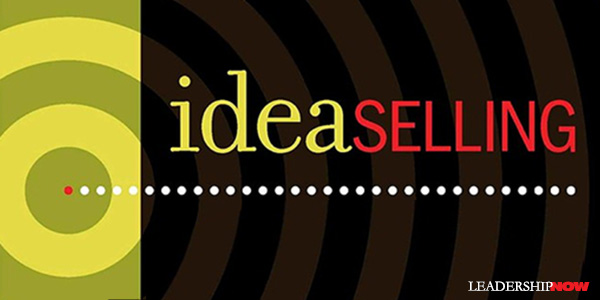
IDEAS don’t sell themselves. In fact, the better and bolder they are, the more they need selling. Sam Harrison offers hundreds of tips to help you get your (creative) ideas sold and keep you centered in the process. IdeaSelling, says Harrison, is for “anybody who knows the pain and suffering of presenting an idea and having it slammed to the ground, picked over, or altered beyond recognition.” Simply saying, “They just don’t get it” is playing the victim. It doesn’t help you get your idea sold. One of the first reminders he gives us is one that is easily forgotten in the moment: It’s not about you. He writes: Decision-makers aren’t interested in your pain. A few others:

Posted by Michael McKinney at 11:52 PM
06.10.10

Top Five Rules for Digital Marketing Success in an Anytime, Everywhere World
Rule #1: Insight Comes Before Inspiration. The most successful digital initiatives typically don't start with the idea for a cool new digital experience. Instead, they start with consumer insights culled from painstaking research into who your customers are, what they're all about, how they interact with consumer technologies, and what they want from the brands they know and trust. Case in point: Dove's "Campaign for Real Beauty." Rule #2: Don't Repurpose, Reimagine. Creating multi-platform strategies that connect with audiences where they live doesn't just mean posting television spots on YouTube in the hopes they go viral. In a medium where the possibilities are endless, television is the jumping-off point to much more interactive and engaging experiences. You've got to invent new ways to help your customers make your brand their own. Case in point: HBO's Voyeur Project. Rule #3: Don't Just Join the Conversation -- Spark It. Out of the over 600,000 branded pages that Facebook Page Tracker monitors, a mere 57,000 have more than 1,000 "fans." Apparently, most people don't want to be friends with a brand. If you want to be part of the conversation on social networking sites, be the party that initiates it -- through compelling experiences that keep customers talking. Case in point: Johnson & Johnson's BabyCenter. Rule #4: There's No Business Without Show Business. Your brand is a story; tell it. Don't just sell product; sell the problem it solves, the feeling it gives, the status it conveys, or the value it embodies. But beware of pushing to transform your brand's website into an "entertainment portal" simply for entertainment's sake. In the on-demand era, the best-branded entertainment experiences are P-O-S-itive -- that is: personalizable, ownable, and sharable. Case in point: Degree antiperspirant's webisode series "The Rookie." Rule #5: Want Control? Give It Away. "User-generated content" (UGC) might not be cutting edge (it's been featured on ABC-TV's America's Funniest Home Videos for nearly twenty years), but it's a big-time buzz builder. Young consumers, especially adolescent males, seem more than happy to create their own video ads to upload on YouTube and email to friends. How do you give away control while simultaneously getting what you want? Ensure rewards for making UGC promote your brand, rather than mock or bash it. Case in point: Doritos' $1 million contest for creating a Super Bowl commercial, which, according to the company, generated $36 million in free publicity for the brand before and after the big game. Adapted from The On-Demand Brand: 10 Rules for Digital Marketing Success in an Anytime, Everywhere World by Rick Mathieson. 
Posted by Michael McKinney at 10:32 AM
02.18.10

How Fascinating is Your Message?
ROBERT LOUIS STEVENSON said, “Everyone lives by selling something.” Leaders are always selling something—an idea, change, themselves or even their example. It’s influence. While we know a clear consistent message is necessary it is often hampered or even marginalized by competing messages and issues. Sally Hogshead is an expert at delivering messages and changing people’s minds. In her book Fascinate: Your 7 Triggers to Persuasion and Captivation, she writes, “A competitive environment demands a more captivating message.” A more captivating message is a more fascinating one. Fascination is the connection we make with others that causes them to change their mind and behave differently. “People won’t change a preference, start a thought process, form a bond, or make a behavioral shift unless they’re provoked to change their opinions or actions.” Fascination provides the provocation. A fascinating message steps outside the norms in one or more of the following ways: provokes strong and immediate emotional reactions (love it or hate it), creates advocates, becomes “cultural shorthand” for a specific set of actions or values (people identify with it), incites conversation, forces competitors to realign around it, and/or triggers social revolutions (forces us to think differently). The key to mastering fascination is learning to effectively activate the seven triggers:
The point of all this is that you can make your message (or yourself for that matter) more fascinating. “All seven triggers affect decision making whether or not we intend them to.” She offers tools for evaluating your message, developing the appropriate triggers and then executing those triggers. She says there’s no “right” way to fascinate and that’s a good thing because we all operate a bit differently and tend to utilize different combinations of the fascination triggers. On her web site you can find out your fascination score (F Score) by taking a short test. In an interesting example concerning teenage drinking and driving she notes that a graphic photo of a car wreck doesn’t seem to effectively dissuade teenage drivers. For teens, fear isn’t necessarily a reason to avoid something. How do you provide a fascinating message for this group? Luke Sullivan, a legendary advertising writer, solved the problem. Luke knew that teems don’t fear death in the same way as adults. He also figured out what does create alarm among these drivers: Losing their license. Armed with that fact, he threatened teens with the ultimate dire consequence. How could you change your message to make it more fascinating and thus more effective for your audience? Throughout the book she blends art and science to demonstrate what fascinates people and why. You might be surprised to find out which fascinations are driving your own behavior. Her writing style and examples are very entertaining. “Whether we realize it or not—whether you intend to or not—you’re already using the seven triggers,” she writes. “The question is, are you using the right triggers, in the right way, to get your desired result? By mastering the triggers, your ideas become more memorable, your conversations more persuasive, and your relationships more lasting.” How do you try to change people’s minds? Could you make your message more fascinating? 
Posted by Michael McKinney at 05:47 PM
06.08.09

Lead, Sell, or Get Out of the Way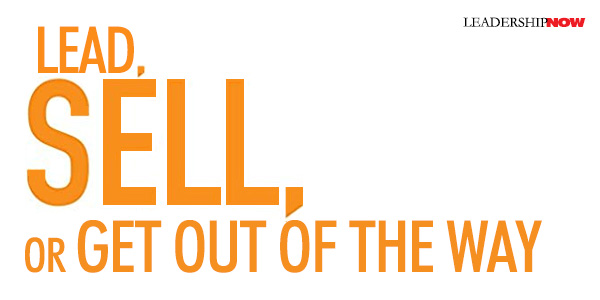 Lead, Sell, or Get Out of the Way by Ron Karr provides more evidence that leadership isn’t just about a few titled people at the top. It is a choice to think differently. Leadership is a choice to think differently about anything you do. Selling is no exception and is closely linked to the functions of a leader. Leadership is not always about people we “lead” in the conventional sense, but is frequently about people we must influence. Karr writes, “Whether you sell a product, a service, or an idea, you must be able to influence other people as leaders do.”
Lead, Sell, or Get Out of the Way by Ron Karr provides more evidence that leadership isn’t just about a few titled people at the top. It is a choice to think differently. Leadership is a choice to think differently about anything you do. Selling is no exception and is closely linked to the functions of a leader. Leadership is not always about people we “lead” in the conventional sense, but is frequently about people we must influence. Karr writes, “Whether you sell a product, a service, or an idea, you must be able to influence other people as leaders do.”
It begins with being able to and understanding the need to engage others in continuous strategic conversations as part of the normal way of doing things—a process Karr has termed Integrated Dialogue. Integrated dialogue is a conversation of shared purpose that draws people out “to create a powerful relationship, one that identifies whole new zones of mutual opportunity, addresses far-ranging issues, and positions you as an invaluable resource: a leader.” As with all leaders, salespeople too will succeed when they fully appreciate the many relationships inherent in their success. Sales leaders lead a whole cast of people in their own organizations from the customer service, tech people to accounting and senior management. In addition, they lead not only their customer or end-user but also many points of contact in their customer’s organization that are likely to have some input on the buying decision like operations, accounting, purchasing, and senior management. Gone are the days where everything filters through the salesperson. “Your success as a salesperson depends on your ability to build and sustain coalitions both inside and outside your organization. You must create and lead the coalition, no matter what you are selling.” This will resonate with any leader: Your job is to manage multiple constituencies and alliances and to use those alliances to identify new and better ways of generating the desired results. Your job is to do what most salespeople don’t do: lead the conversation with your prospects and customers about the results they need, the problems they have, and the obstacles they face. To make this happen you must possess and develop the belief that you have everything you need and can build on that, the belief that you can improve any area of your life, everything is possible, preparation maximizes your potential, and your customers—the people you need to influence—come first. After laying the groundwork, Karr defines and explains the seven traits that great sales leaders share:
Karr demonstrates how to move from task-oriented selling (which is what most salespeople do) to purpose-oriented selling. These principles are worth bearing in mind on a personal development level as well. Karr encourages, “The bottom line is that you have the ability to increase your sphere of influence and sales just by the way you act toward those you are trying to influence.” Change your conversations, change your outcomes. Leaders in any field will find much here to assimilate into their daily activities. Read it and grow. 
Posted by Michael McKinney at 11:15 AM
05.12.09

Seth Godin at TEDHere is Seth Godin's talk at TED on the marketing of an idea. It gives a good overview of his book Tribes: We Need You to Lead Us
Posted by Michael McKinney at 12:05 PM
03.18.09

Collapse of Distinction: How Do You Get People Thinking About You?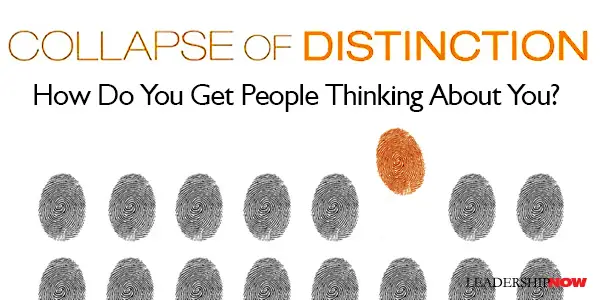
I'VE SEEN Scott McKain speak on a couple of occasions and he is all about customer experience in both content and delivery. His new book Collapse of Distinction, is no different. The collapse of distinction is a cultural phenomenon of not just blandness, but sameness. McKain writes that it has become a “corporate and professional nightmare.” The current economic environment makes this book all the more important. The problem isn’t just the economy though; it’s that the economy exposes a problem that is more easily ignored in a good economy. To ignore the collapse of distinction now, can be fatal. Today customers want value more than ever. How will you create that value? Low price isn’t the answer, but without doing the homework, that’s really all you’re left with. McKain writes, “If you cannot find it within yourself to become emotional, committed, engaged, and yes, fervent about differentiation, then you had better be prepared to take your place among that vast throng of the mediocre who are judged by their customers solely on the basis of price. It is the singularly worst place to be in all of business. If you aren't willing to create distinction for yourself in your profession—and for your organization in the marketplace—then prepare to take your seat in the back, with the substantial swarm of the similar, where tedium reigns supreme.” Three factors conspire to destroy differentiation:
Coming to grips with this propensity of human behavior takes a lot of effort. We would rather “execute the least progressive, most conforming activity [we] can to achieve the success [we] desire.” However, McKain lays out the process to overcome sameness to lift you or your company out of the doldrums, as clearly and as simply as possible. How do you grab attention? How do you get people thinking about you? How do you get the opportunity to use the combination of your expertise and talent? You can differentiate yourself on product, price, and/or service. For most of us, the only real way we are going to differentiate ourselves is through service. McKain lays out the Four Cornerstones of Distinction and devotes a chapter to each explaining how you apply them in your situation: Clarity, Creativity, Communication and Customer-Focus. Each chapter ends with an executive summary and solid action-points to get the ball rolling. He says that we have to profitably create experiences that are so compelling to our customers that loyalty is assured. Your organization's survival may depend on the concepts presented in this book. “What is compelling about you, what will create points of distinction about you, and what will establish a connection between us?” You do not need to change everything about how you do business to create distinction. Start by walking through your list of points of contact with customers, reframing and redefining how you perceive each moment of interaction. From these new perspectives, you can then begin to create specific points of differentiation with your customers. By developing your professional laundry list from the exercise—and recognizing that if these practices are the industry standard, then they will almost always fail to create distinction for you—you are taking an important first step in disciplining yourself as a professional to develop differentiated methods and tactics. Different is not just good, different is better. UPDATE: Collapse of Distinction has been updated and retitled: Create Distinction: What to Do When ''Great'' Isn't Good Enough to Grow Your Business (2013) 
Posted by Michael McKinney at 03:56 PM
01.23.09

Step One: Reality Check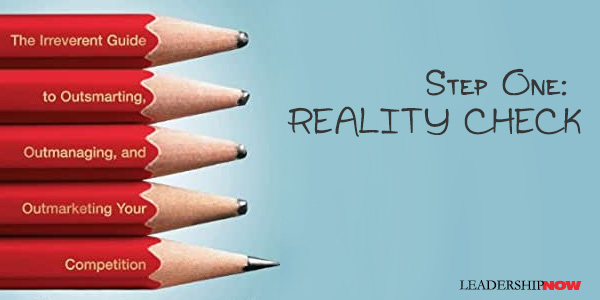 WE have written here that this is the season to rethink, explore, fine tune what works, discard what doesn’t and set a new course. Essentially what we need is a reality check. No longer can we skate by on surplus. Guy Kawasaki’s new book, Reality Check: The Irreverent Guide to Outsmarting, Outmanaging, and Outmarketing Your Competition, is a good place to begin.
WE have written here that this is the season to rethink, explore, fine tune what works, discard what doesn’t and set a new course. Essentially what we need is a reality check. No longer can we skate by on surplus. Guy Kawasaki’s new book, Reality Check: The Irreverent Guide to Outsmarting, Outmanaging, and Outmarketing Your Competition, is a good place to begin.
It would be unfortunate if the book’s heft – 474 pages – made it too intimidating to pick up because it’s full of great insights, clever thought, and often provocative ideas that will make you see things in a new way. I don’t recommend reading it from cover to cover. It’s not that kind of book. It’s more of a highly readable, reference tool that you’ll want to refer to again and again. Besides, unless you were born in this century, you’ll need some time to allow your brain to create some new circuitry. There aren’t any shortcuts given here. Often life and especially entrepreneurship is about grinding it out; sticking to what you believe in until it works. It’s not about sticking to your competition either. It’s about focusing on what you can do to add value to your customers and the world. Frank Sinatra famously said, “The best revenge is massive success.” What drives your competition crazy is your success. The 94 chapters are based on his highly regarded blog, How To Change the World. The topics cover everything from the start-up, maintaining, growing your business to communicating your message and surviving what comes your way. Some takeaways:
There’s more, but it would take 474 pages. Better get the book. 
Posted by Michael McKinney at 07:21 AM
01.16.09

Maybe What You Need is a Little Disruption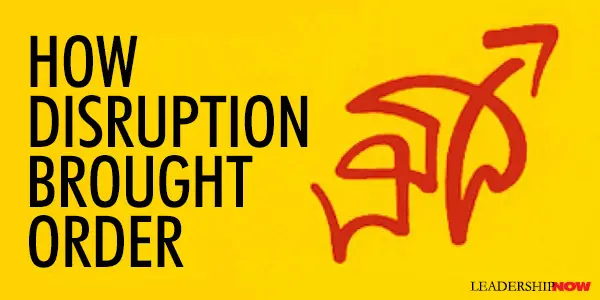
IN TIMES LIKE THIS we need to rethink what we are doing. Hit the reset button. Jean-Marie Dru’s prescription may be just the thing you need. Dru is the President and CEO of TWBA/Worldwide and author of How Disruption Brought Order, calls it Disruption. Disruption is “breaking with the status quo, refusing given wisdom, and finding unexpected solutions. We believe that the best way to help our clients grow their businesses is most often through strategies that involve rupture.” In describing marketing campaigns for Nissan (Shift), Adidas (Impossible is Nothing), Apple (Think Different), and others, he shows how Disruption asks the public to see the brand in a new light and thereby refresh, transform and reinvent it. But, it’s not limited to marketing and advertising. It has application to both your business and your thinking. “If you change nothing within a company you are sure to fail. As you also will if you try to change everything. The key to success lies within your ability to determine the fine line between what must change and what you must not. Fiona Clancy, the TWBA Disruption Director, summaries it this way: Disruption Is: • Being endlessly curious • Keeping an open mind • Looking for new beginnings with larger futures • Anticipating the future without fully expecting it • Accelerating change to your client's advantage • Recognizing patterns of success and building on them • Being creative ahead of the usual agency creative process (Creative is not a department.) • Turning intuition into a discipline, but without devaluing intuition • Gaining stability from going somewhere fast • Being in control rather than controlling • Anticipating change rather than defending against it • Questioning the way things are: imagining the way things could be Disruption Is Not: • Change for change’s sake • Upsetting the client’s organization • A particular creative style • Throwing away the past • Being deliberately wacky • Limited to advertising  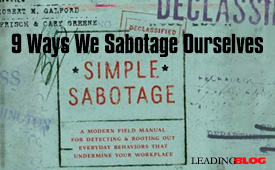 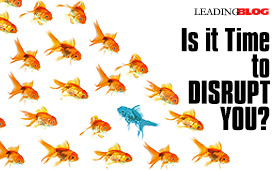
Posted by Michael McKinney at 03:01 PM
04.23.07

Google Ranked the World’s Most Powerful Brand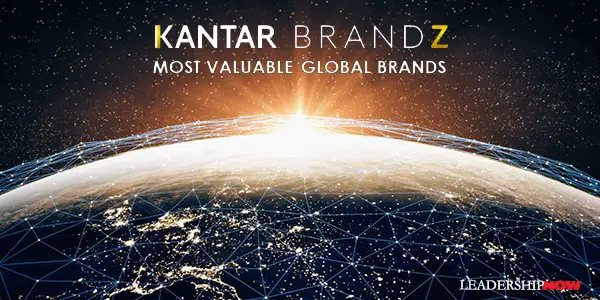

They found that the value of international brands including BMW ($25,751 million), L'Oreal ($12,303 million) and Zara ($6,469 million) benefited from growth in emerging markets known as BRICs (Brazil, Russia, India and China). These brands' ability to balance "foreign-ness" and localization is what allowed them to successfully penetrate the BRIC markets and attract the rising class of disposable income-rich consumers. In addition, delivering on the promise of environmental responsibility helped boost the value of major brands including BP ($5,931 million), Shell ($4,679) and Toyota ($ 33,427 million). Commenting on this year's BRANDZ™ Top 100 ranking, Eileen Campbell, global CEO of Millward Brown said: "There are tons of actionable insights that can be derived from these rankings. They prove that a blend of good business leadership, responsible financial management and powerful marketing are an unbeatable combination that can be leveraged to create and grow corporate wealth." Strong brands have the power to create business value. They impact much more than revenues and profit margins. Strong brands create competitive advantages by commanding a price premium and decrease the cost of entry into new markets and categories. They reduce business risk and help attract and retain talented staff.
Posted by Michael McKinney at 09:23 AM
|
BUILD YOUR KNOWLEDGE


How to Do Your Start-Up Right STRAIGHT TALK FOR START-UPS 
Grow Your Leadership Skills NEW AND UPCOMING LEADERSHIP BOOKS 
Leadership Minute BITE-SIZE CONCEPTS YOU CAN CHEW ON 
Classic Leadership Books BOOKS TO READ BEFORE YOU LEAD |
|